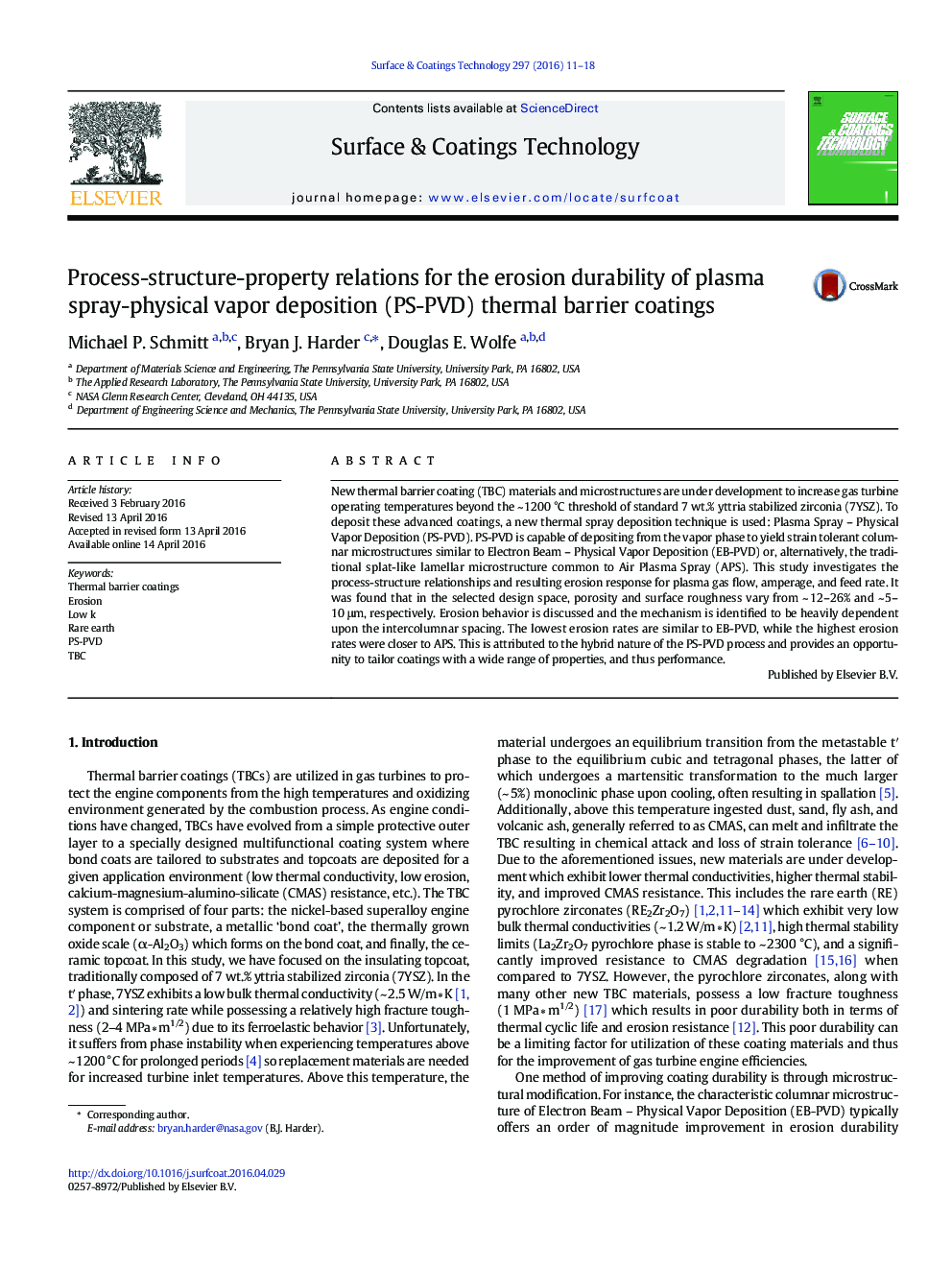| Article ID | Journal | Published Year | Pages | File Type |
|---|---|---|---|---|
| 1656344 | Surface and Coatings Technology | 2016 | 8 Pages |
Abstract
New thermal barrier coating (TBC) materials and microstructures are under development to increase gas turbine operating temperatures beyond the ~ 1200 °C threshold of standard 7 wt.% yttria stabilized zirconia (7YSZ). To deposit these advanced coatings, a new thermal spray deposition technique is used: Plasma Spray - Physical Vapor Deposition (PS-PVD). PS-PVD is capable of depositing from the vapor phase to yield strain tolerant columnar microstructures similar to Electron Beam - Physical Vapor Deposition (EB-PVD) or, alternatively, the traditional splat-like lamellar microstructure common to Air Plasma Spray (APS). This study investigates the process-structure relationships and resulting erosion response for plasma gas flow, amperage, and feed rate. It was found that in the selected design space, porosity and surface roughness vary from ~ 12-26% and ~ 5-10 μm, respectively. Erosion behavior is discussed and the mechanism is identified to be heavily dependent upon the intercolumnar spacing. The lowest erosion rates are similar to EB-PVD, while the highest erosion rates were closer to APS. This is attributed to the hybrid nature of the PS-PVD process and provides an opportunity to tailor coatings with a wide range of properties, and thus performance.
Related Topics
Physical Sciences and Engineering
Materials Science
Nanotechnology
Authors
Michael P. Schmitt, Bryan J. Harder, Douglas E. Wolfe,
